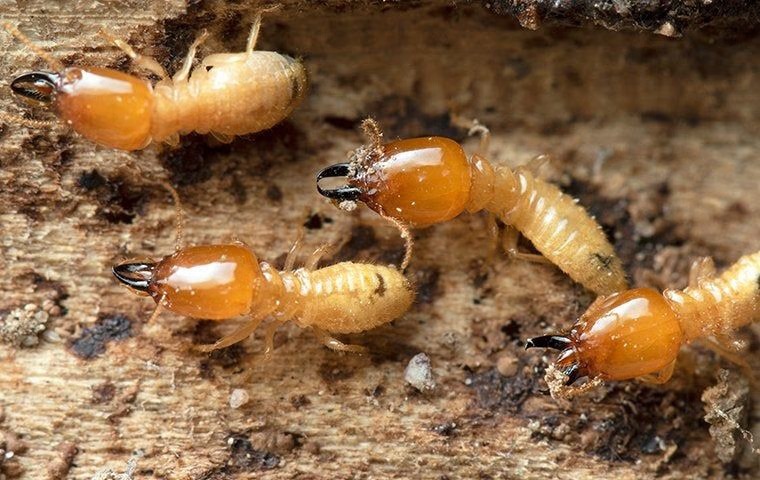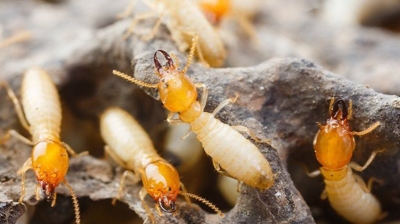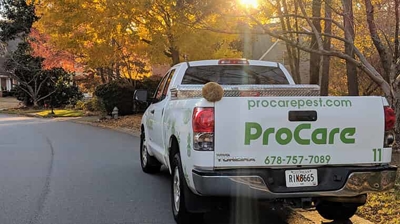
How To Protect Your Lawrenceville Home From Termites
There are many misconceptions about termites in Lawrenceville. These misconceptions present the greatest threat to your property. They can cause you to make mistakes that attract termites or make you complacent about the threat that termites pose. Can termites destroy your home in a day, a month, or a year? No. But that doesn't mean you should shrug them off. Join us as we examine the facts you should know about termites and talk about how termite pest control in Lawrenceville can guard your property against potential damage long before you see a termite problem.
About The Subterranean Termite Caste System

Will you see termites long before they damage your home? Maybe. But not likely. It is a misconception that you will see termites or termite damage before it is extensive. The best way to explain this point is to discuss the different termites in the termite caste system. We'll focus on subterranean termites since they are the termites that destroy Lawrenceville properties.
Swarmers: When you see dozens of white-winged, black insects appear in your home, you know you're in trouble. Most Lawrenceville residents know what swarmers are. Unfortunately, termite swarmers rarely emerge on the inside of homes. They prefer to exist on the outside of structures. Finding a termite swarm in your house is a sign that you have a severe infestation. It isn't a great way to find out you have active termites in the walls of your home.
Workers: These are the termites that damage your home. You might think that you would see them doing this, but you would be wrong. A worker termite avoids being out in the air because it dries out quickly and dies. It also has an aversion to light. These two characteristics cause worker termites to stay hidden. You won't see them crawling around on the wood in your home. They'll hide inside the wood. You may see them in your yard as you pick up dead branches or move objects from one location to another. But even this activity can go undetected as you look for signs of termites in your yard. Worker termites are only 1/8 of an inch long and look like fat ants. It is easy to mistake termites for ants or some other bug, or miss seeing them entirely.
Soldiers: When you uncover worker termites, you are more likely to notice the soldiers that protect them. Soldiers are larger and have orange heads and black pincers. But, like worker termites, they stay hidden most of the time.
The Queen And King: These two termites, which are swarmer termites that have established a nest, are found in the heart of their nest. You're not likely to ever see them unless you excavate soil in your yard, remove a stump, or take on a construction project in your home.
If you think you'll see termites before they destroy your home, termites are likely to disappoint you. Let's look at a few more misconceptions that could lead to property damage.

Why Choose Procare Pest Services?
-
Locally Owned & Operated
-
Timely Services Available
-
Free Inspections for Your Home or Business
-
Modern & Effective Pest and Wildlife Control Methods
Factors That Attract Termites To Your Home And How To Remove Them
Have you been told that there is nothing you can do to prevent termite damage or that all homes are at equal risk? This isn't true. Some factors attract termites. If you are aware of these factors, you can reduce the risk of incurring termite damage.
Wood Sources: Termites are attracted to any property that has food. Some food sources are obvious. Others are not so obvious.
- Refrain from burying wood in your yard. Subterranean termites live in the ground and will quickly access this food source.
- Store the dead branches you pick up from your yard in plastic bins to prevent worker termites from accessing this desirable food source from the ground.
- Don't leave stacks of cardboard on the ground in your yard. Store them inside or in a plastic bin.
- Replace wooden borders around flower beds, landscaping, and gardens. Natural materials, like stone, can be pleasing to the eye without providing a food source for termites.
- Refrain from planting vegetables that termites eat, such as tomatoes and peppers.
- Address any wood-to-soil contact on structures. An example is the wooden posts that hold up your back deck. We recommend putting concrete underneath your wood posts. Doing so will allow you to see when subterranean termites create mud tubes to get to the posts.
- Replace wood fences with vinyl fences, or some other material that is resistant to termite damage.
- Create an elevated platform for campfire wood and other wood sources stored in your yard. You don't want these to be on the ground where termite workers can easily feed on them.
Moisture: Termite workers seek out moist soil. They need moisture to stay hydrated and they know that moist soil often means rotting wood is available. When you take steps to reduce moist soil, you make your property resistant to termite activity.
- Get your gutter system cleaned by a professional. Gutter blocks allow rainwater to run over the sides of the gutter and saturate the ground near your home.
- Remove unwanted grass, weeds, and other vegetation from your landscaping to allow for good airflow to keep your landscaping and soil dry.
Along with the prevention tips provided above, you should perform routine inspections of your property. Look for worker termites, termite swarmers, the wings shed by termite swarmers, mud tubes, and wood damage near the soil. It is best to catch termites early. If you need assistance with termite inspections, keep us in mind. Procare Pest Services offers termite inspections in Lawrenceville. We also provide many other termite control services.
-
"Tech and he’s pretty awesome"
I have been using Procare for about a year or more now and I have no complaints. They have a really good staff.
Kisha L. -
"Very knowledgeable and was patient with all our questions"
First time customer. Scheduling was a breeze and they sent me lots of reminders.
Dave J. -
"We love Procare"
We love procare! Have been with them for almost 6 years now and have never
had a negative experience.Shawn K. -
"I am extremely pleased with Procare!"
This company went out of its way to help me solve my dilemma and get me taken care of! I am very appreciative of their kindness and professionalism.
Juanita G.
The Best Way To Protect Your Lawrenceville Home From Termites
What is the best way to avoid termite damage? Let a certified pest control professional handle the protection of your home, and get a termite bond. When your home has a termite bond, you get routine inspections, ongoing treatments as needed, and termite repair in the unlikely event that termites damage your property.
If you live in Lawrenceville, contact Procare Pest Services to get a termite bond or to transfer your termite bond to us. We can retreat the exterior of your home and take over liquid renewals, bait replacement, and other services.
You don't have to wait until you see termites or termite damage. Contact us today to get your property protected. Termites are sneaky pests that can surprise you with costly repairs in the season of your life when you're looking to relax and enjoy the fruits of your labor. Termite protection protects your savings account and your retirement from the harmful impact of Lawrenceville termites.
Complete the form below to request your quote.

Stay In The Know
-
 How to Tell If There’s Wildlife Activity in Your Home (and What to Do About It)Read More
How to Tell If There’s Wildlife Activity in Your Home (and What to Do About It)Read More -
 Keep Your Atlanta Home Fly-Free: How Procare Manages House Flies, Fruit Flies, and Other Nuisance FliesRead More
Keep Your Atlanta Home Fly-Free: How Procare Manages House Flies, Fruit Flies, and Other Nuisance FliesRead More -
 DIY pest control?Read More
DIY pest control?Read More -
 Procare: The Best Pest Control Solutions for Atlanta BusinessesRead More
Procare: The Best Pest Control Solutions for Atlanta BusinessesRead More -
 3 Signs You Might Have a Termite Problem in Atlanta—and How to Spot Them EarlyRead More
3 Signs You Might Have a Termite Problem in Atlanta—and How to Spot Them EarlyRead More -
 Your Year-Round Defense Against Fall Bugs and Joro Spiders in AtlantaRead More
Your Year-Round Defense Against Fall Bugs and Joro Spiders in AtlantaRead More -
 How To Solve Any Fall Pest issue in 2024Read More
How To Solve Any Fall Pest issue in 2024Read More -
 Keeping Spiders Out Of Your HomeRead More
Keeping Spiders Out Of Your HomeRead More









